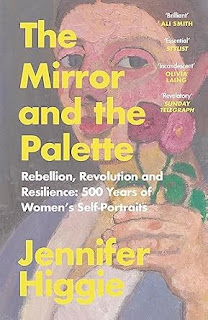Ghost Town: A Liverpool Shadowplay is a mixture of memoir and storytelling, by Jeff Young, published in 2020. Jeff Young is a playwright, screenwriter, writer, lecturer and broadcaster.
The hardback edition dustcover has a sepia photograph of two young children stood in the doorway of a terrace house. They seem to be looking out for someone, leaving or returning, I’m not sure. Jeff Young steps out from his family home to journey through the streets of Liverpool, his childhood, and life. The purpose is to find and preserve Liverpool. The book has seventeen chapters. As I’m reading, it occurs to me that these chapters are vignettes, and for a moment I’m reminded of Sandra Cisneros’s The House On Mango Street. I know I’m not on Mango Street: it’s the beauty of the writing that grips my hand ensuring I don’t get left behind.
The opening chapter "Gutted Arcades" provides a wonderful insight to why Young is on this journey: "My mother liked to trespass - she didn’t call it trespassing, she called it having a nose. We’d have a look round the Corn Exchange or go up the back stairs of an insurance building, slip into the Oriel Chambers and sort of just … breathe. We were breathing in Victorian dust and the pipe smoke of Dickensian ledger clerks; drinking in the shadows and gloom and beams of light." In these few sentences I can see the awe and wonderment Young has for his mother, I sense her wit and love for the heartbeat of Liverpool. I have a glimpse of Young’s ability to form a link to people of the past, present and future - that the ghosts are held in the very structure of a city for all to see should they choose to.
Throughout his journey, Young bumps into many ghosts, too many to name here: "When I was seventeen I picked up a copy of Malcolm Lowry’s Ultramarine in a bookshop in Exchange Station - a station used by Lowry, en route to Norway in 1931 - and I discovered that Lowry had been a haunter of Liverpool’s streets and cinemas, too." Chapter by chapter, the reader follows Young through Liverpool, his childhood, adulthood, reflections trying to make sense of it all, with each step meeting family members, childhood friends, buildings, colourful characters real and imagined.
What becomes apparent is the gradual disappearance of Liverpool, through buildings destroyed, redeveloped or left to decay. They’ll remain invisible if people forget, have no history or relationship with the place they call home. Young’s writing enables the reader to be part of his journey to find himself within the streets, buildings, sights and experiences of Liverpool.
Ghost Town is a treasure chest of what it is to be human, community, family and the beauty of memories. Young shows me the complexity of memories, how through life one gathers them, some belonging to you while others are on loan from writers, musicians, artists, buildings, and family. They aid an understanding of self and life events. I found some of the stories within the chapters complex, others upsetting; some made me smile, others held the wonder of childhood. The last three chapters for me are outstanding. In "The Haunted Lullaby," Young writes of an experience where dreams and his imagination merge with raw reality - how this has impacted his writing and has never left him or Liverpool. "In some ways, I think this is what made me a writer; it’s the origin story for the way I see and hear Liverpool. Elsie’s lullaby seeps into the city, haunting it, disturbing it, creating endless, turmoil. It’s beautiful and strange." The last chapter is magical and moving, Young’s description of searching for the "Stanley Park treasure-tree" is enchanting and leads the reader into knowing his sister Val who lived in a treasure trove house. I will say no more, so you can discover the wonder of Val, Liverpool and Jeff. The vignettes will never fade from my memory and I hope neither will Liverpool.
About the reviewer
Sally Shaw has an MA Creative Writing from the University of Leicester. She writes short stories and is currently working on her novel based in 1950s Liverpool. She sometimes writes poetry. She gains inspiration from old photographs, history, her own childhood memories, and is inspired by writers Sandra Cisneros, Deborah Morgan, Liz Berry and Emily Dickinson. She has had short stories and poetry published in various online publications, including The Ink Pantry and AnotherNorth and in a ebook anthology Tales from Garden Street (Comma Press Short Story Course book 2019). Sally lives in the countryside with her partner, dog, and bantam. Twitter: @SallySh24367017





